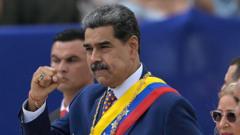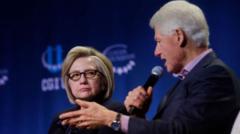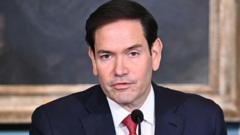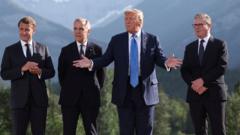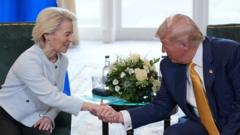The World Trade Organization (WTO) has downgraded its global trade forecasts, attributing the decline to US tariffs and heightened political uncertainties, particularly regarding US-China relations.
WTO Warns of Global Trade Decline Due to US Tariffs
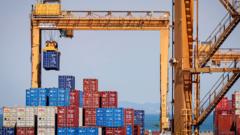
WTO Warns of Global Trade Decline Due to US Tariffs
The World Trade Organization predicts a significant shrinkage in global trade as US tariffs impose unprecedented strain on international relations.
The World Trade Organization (WTO) issued a stark warning this week, projecting a notable decline in global trade for the current year, primarily due to tariffs implemented under US President Donald Trump. During a press conference in Geneva, WTO director general Ngozi Okonjo-Iweala referred to tensions between the US and China as "really worrying," highlighting the potential repercussions on international commerce.
Analysts at the WTO have raised concerns about "severe downside risks," including retaliatory tariffs and overarching political instability, which could exacerbate the decline in global goods trade. They specifically noted that North America is expected to experience a dramatic drop, with estimates suggesting a reduction of more than 10% in trade volumes.
Previously, the organization had projected an increase in global goods trade of 2.7% for 2025, but this has now been adjusted to a contraction of 0.2%. Chief economist Ralph Ossa stated, "Tariffs are a policy lever with wide-ranging, and often unintended consequences," pointing to the significant dampening effect trade policy uncertainty has on trade flows, ultimately reducing exports and harming economic activity.
In addition to the WTO's assessments, the United Nations Conference on Trade and Development (UNCTAD) has released a report projecting global growth will slow to 2.3% by 2025, a figure that might indicate impending global recession as it falls below the 2.5% benchmark.
The imposition of a baseline tariff of 10% on nearly all foreign imports to the US took effect on April 5, with select countries and goods exempted. In contrast, China is facing much steeper tariffs of approximately 145% on most of its exports to the US. Following this backdrop, the US stock market experienced a downturn as major indexes declined amid continuous economic uncertainties.
Despite these negative forecasts regarding trade with the US, the WTO remains optimistic about certain regions, expecting moderate growth in exports and imports in Asia and Europe this year, which could help cushion the overall impact on world trade.
For the first time, the WTO also included projections on services trade, which encompasses international transactions involving services rather than goods. They anticipate that services trade will grow by around 4% by 2025, although this is approximately one percentage point less than previously expected.
Since taking office, President Trump has made multiple announcements regarding tariffs, asserting that these measures would catalyze a shift towards American-made products, bolster tax revenues, and promote substantial investment within the US. However, critics contend that reviving domestic manufacturing poses significant challenges that could take decades, leaving the economy vulnerable in the interim.
Recently, Trump has made concessions, such as announcing a 90-day pause on certain tariff implementations affecting a wide range of countries—except for China—in response to growing pushback from political circles and financial markets. The governor of the Bank of England also cautioned that these tariffs might ultimately leave UK consumers with reduced disposable income.
In the face of these challenges, the global trade landscape continues to evolve, with ramifications felt across various sectors, from manufacturing to services.


